Maintaining a clean, safe environment after construction is crucial for homeowners and businesses alike. A professional post-construction cleaning service not only removes debris and dust but also ensures that every surface shines, all fixtures function properly, and any potential hazards are eliminated. By understanding what to expect, from the initial walkthrough to the final inspection, you can choose the right provider and rest assured that your newly renovated or built space will be move-in ready without delays.
Initial Assessment and Walkthrough
Before any cleaning begins, a reputable post-construction cleaning company will schedule an on-site assessment. During this walkthrough, a project manager or senior technician will:
- Evaluate Debris and Waste Volume: Identify large debris, such as leftover drywall scraps, wood offcuts, or packaging, that requires heavy-duty disposal.
- Note Special Requirements: Pinpoint delicate surfaces (e.g., freshly painted walls or newly installed hardwood floors) and any fragile finishes that need extra care.
- Develop a Customized Cleaning Plan: Based on the project scope, the team will create a checklist detailing tasks like rough cleanup, dust removal, and final polishing.
This step sets clear expectations around timelines, equipment needs, and pricing, preventing surprises when the cleaning crew arrives.
Debris Removal and Rough Cleaning
One of the primary tasks in post-construction cleanup is removing leftover debris, which often includes:
- Broken tiles, scraped wood, and extra drywall pieces
- Packaging materials, cardboard, plastic wrap, and foam inserts
- Nails, screws, and other sharp objects that pose safety risks
A professional service will bring industrial-grade brooms, heavy-duty trash bags, and, if necessary, even a skid-steer loader or dumpster for large-volume projects. Crews typically begin by sweeping or vacuuming large debris, followed by disposing of all construction waste in compliance with local regulations. By tackling rough cleanup first, subsequent detailed cleaning steps become more efficient and effective.
Dust Control and Air Quality Improvement
Construction dust is pervasive and can settle on every surface, from ceiling fans to baseboards. Effective dust control involves:
- High-Efficiency Particulate Air (HEPA) Vacuums: These vacuums capture fine particles that standard vacuums might recirculate into the air.
- Microfiber Dusting Tools: Furniture, shelves, and window sills are wiped down with microfiber cloths that trap dust instead of spreading it around.
- Air Scrubbers or Purifiers: On larger commercial sites or when extensive drywall sanding has occurred, technicians may use portable air scrubbers to filter airborne particles and improve indoor air quality.
Addressing dust thoroughly reduces respiratory irritants, improves HVAC performance, and prevents dust from resettling after cleaning.
Surface Cleaning and Sanitization
Once debris and dust have been addressed, the focus shifts to detailed cleaning of all horizontal and vertical surfaces:
- Floors: Whether the project involved tile, laminate, or hardwood, professionals will use appropriate cleaners to remove paint splatters, grout haze, or adhesive residue. Floor cleaning may involve mopping, steam cleaning, or buffing to restore the original finish.
- Walls and Baseboards: Crews spot-clean or wash walls to eliminate fingerprints, paint drips, or smudges. Baseboards get wiped down to remove drywall dust lines and stubborn scuffs.
- Countertops and Cabinets: Kitchen and bathroom vanities are sanitized to remove dirt, sawdust, and chemical residues. Countertops are polished to highlight natural textures and prevent streaks.
Proper sanitization ensures that any bacterial or mold-prone areas, especially around sinks or in bathrooms, are neutralized, promoting a healthier indoor environment.
Detailing Finishes, Fixtures, and Hardware
A hallmark of professional post-construction cleaning is the meticulous attention to fixtures and finishes:
- Light Fixtures and Ceiling Fans: Crew members will dismantle, dust, and polish fixtures to remove plaster splatter or paint overspray.
- Windows, Blinds, and Tracks: Beyond glass cleaning, teams clean window tracks and blinds to eliminate grit that can hinder smooth operation.
- Door Frames and Handles: Door jambs, hinges, and handles receive a thorough wipe-down to remove grease, paint, or fingerprints.
- Appliances and Plumbing Fixtures: In kitchens and bathrooms, technicians remove protective films from new appliances, clean inside and out, and ensure faucets, sinks, and toilets shine without watermarks.
By detailing every visible element, the space attains a showroom-worthy finish and eliminates any reminders of construction work.
Specialized Services: Carpets, Upholstery, and Hard-to-Reach Areas
Depending on the project scope, additional services may be included or offered as add-ons:
- Carpet and Upholstery Cleaning: If new carpets were installed, hot-water extraction (steam cleaning) removes embedded dust and construction residues. Likewise, any furniture or built-in upholstery receives stain treatment and vacuuming.
- High-Reach Cleaning: For commercial projects with high ceilings or mezzanine levels, crews use extension poles, scaffolding, or lift equipment to clean beams, ventilation ducts, and ceiling corners.
- Window Washing (Interior and Exterior): For multi-story buildings, professionals may provide squeegee cleaning or even employ rope-access technicians for exterior glass.
- Pressure Washing: Exterior patios, driveways, or sidewalks often need power washing to eliminate cement splatters or mortar residue.
These specialized tasks ensure that no area, however challenging, is overlooked, resulting in a comprehensive cleanup.
Safety Protocols and Compliance
Working in a recently constructed space can pose various hazards: loose nails, uneven flooring, and chemical residues. Professional cleaners implement safety measures such as:
- Personal Protective Equipment (PPE): Technicians wear gloves, goggles, and respirators when handling cleaning agents or working around dust.
- Material Safety Data Sheets (MSDS): All chemicals used are documented, ensuring safe handling, storage, and disposal.
- Slip-and-Fall Prevention: Wet floor signs, anti-slip mats, and proper signage alert occupants during mopping or pressure washing operations.
- Waste Disposal Compliance: Adherence to local regulations for disposing of hazardous materials, paint cans, solvents, or contaminated debris protects both your property and the environment.
Clear communication about safety protocols fosters trust and ensures a risk-free experience for everyone on-site.
Timeline, Communication, and Project Management
Timing is critical in post-construction projects. Professional services typically offer:
- Flexible Scheduling: Cleaning can be scheduled daily, weekly, or at project milestones, such as post-rough-cleaning, pre-final-inspection, and move-in readiness.
- Open Communication: Project managers provide daily or weekly progress reports, highlighting completed tasks, any unforeseen issues (e.g., hidden mold or water damage), and potential delays.
- Transparent Pricing: A detailed quote outlines all inclusions, labor hours, equipment usage, and any optional add-ons, so there are no hidden fees.
- Coordination with Other Trades: If other contractors (painters, flooring installers) need access afterward, cleaning teams adjust their schedules to avoid conflicts and ensure seamless handoffs.
Efficient project management reduces downtime, accelerates occupancy dates, and keeps budgets on track.
Final Inspection and Satisfaction Guarantee
Once all cleaning tasks are complete, a final walkthrough with the client or project supervisor ensures no corner is overlooked:
- Client Walkthrough: Together, you’ll inspect each room, testing light switches, opening and closing cabinets, and verifying window cleanliness.
- Punch List Completion: Any missed spots or minor touch-ups are addressed immediately, often at no extra cost if covered under a satisfaction guarantee.
- Documentation: Some providers supply a “Completion Report” with before-and-after photos, signed off by both parties, confirming that all specified services have been performed.
- Post-Service Support: Should any issues arise, like lingering dust or a scratched surface, many reputable companies offer follow-up visits within a set warranty period.
This final stage cements confidence that your space is fully ready for occupation or business operations, with no loose ends. Contact us today to get the best services you’ll ever have.
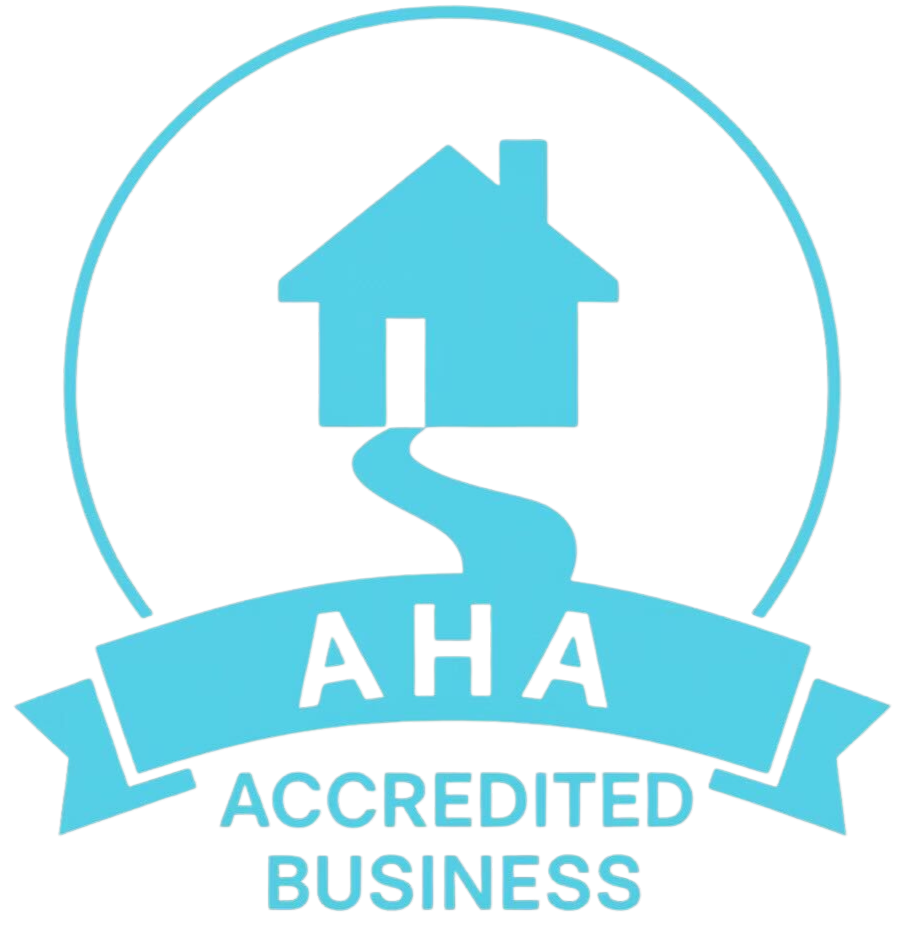
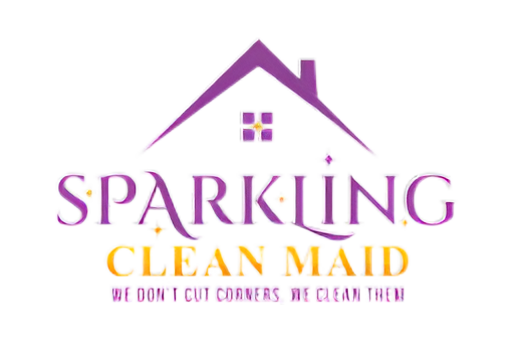
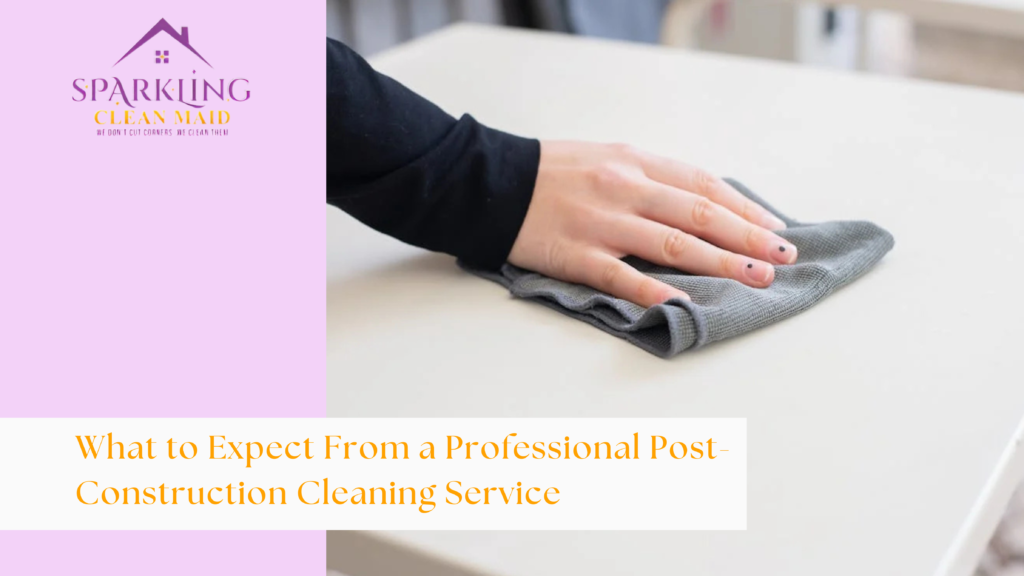
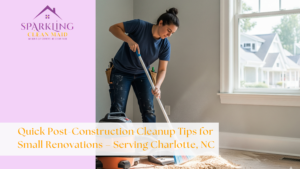
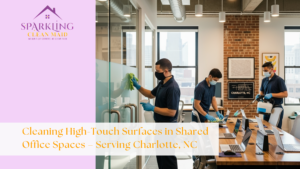


One Response